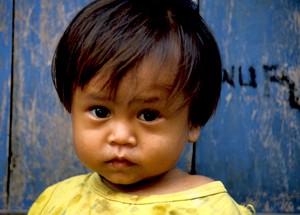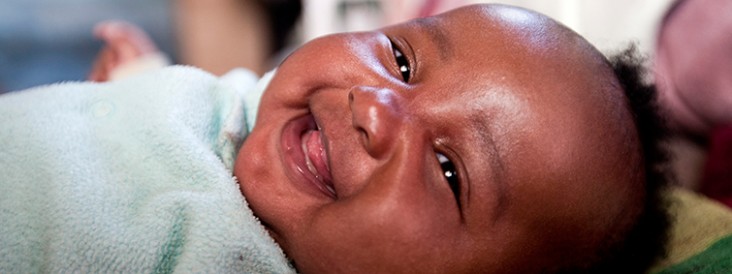“…The United States will join with our allies to eradicate such extreme poverty in the next two decades by connecting more people to the global economy, by empowering women, by giving our young and brightest minds new opportunities to serve and helping communities to feed and power and educate themselves, by saving the world's children from preventable deaths and by realizing the promise of an AIDS-free generation, which is within our reach.”
–President Barack Obama, State of the Union, February 12, 2013

A Child Survival Revolution
America’s legacy in child survival is a proud one: With strong bipartisan support, U.S. investments in global health have saved millions of lives. Nearly 30 years ago, the U.S. Agency for International Development (USAID) and the United Nations Children’s Fund (UNICEF), with the support of the U.S. Congress, launched a “child survival revolution” aimed at reducing the number of deaths among young children in developing countries. As a result, countless efforts and advances in technology culminated in a reduction of child deaths from nearly 12 million in 1990 to 6.6 million in 2012. That means 15,000 fewer children died each day in 2012 than in 1990.
Despite this incredible progress, many of the 6.6 million under-5 child deaths each year can be prevented. We are joining the global community in a movement to end preventable child deaths.
Sparking a Movement
A Promise Renewed emerged from the Child Survival Call to Action, convened in June 2012 by the Governments of Ethiopia, India and the United States, in collaboration with UNICEF. The Call to Action refocused energy and effort around child survival and began the global movement to end preventable child deaths by 2035. The Call to Action challenged the world to reduce child mortality to 20 or fewer child deaths per 1,000 live births in every country by 2035. Since the Call to Action, 174 governments and more than 430 civil society and faith-based organizations have signed the A Promise Renewed pledge to accelerate progress in child survival and work toward this achievable goal.
USAID and Committing to Child Survival: A Promise Renewed
USAID is working under A Promise Renewed with partners, civil society, faith-based organizations and country governments to reach this historic target, which will save an additional 45 million children’s lives by 2035. Under the leadership of governments and in support of the U.N. Secretary-General’s Every Woman Every Child strategy, A Promise Renewed brings together public, private and civil society actors committed to advocacy and action for maternal, newborn and child survival.
A Global Roadmap: Setting the Course
The Global Roadmap guides global efforts in child survival. It pulls together the world’s knowledge about how to accelerate child survival, drawing on the latest peer-reviewed statistics and modeling of the global health community. Speeding up our progress to end preventable child deaths requires changing and streamlining our process. The Global Roadmap calls for five strategic shifts:
- Geography: Increasing efforts in the 24 countries that account for 80 percent of under-5 deaths
- High-Burden Populations: Scaling up access for underserved populations
- High-Impact Solutions: Addressing the priority causes that account for nearly 60 percent of deaths with evidence- based interventions
- Education for Women and Girls: Investing beyond health programs to include empowering women
- Mutual Accountability: Unifying around a shared goal and using common metrics to track progress
We Know What Works
Most of what we need to do to end preventable child deaths is known. As part of a larger effort to streamline our work and focus on effectiveness, USAID is using high-impact, low-cost solutions to reach every child. Some of these interventions include:
- Voluntary family planning helps women bear children at the healthiest times, so mother and child are more likely to survive.
- Access to nutrients enables children to grow to their full potential.
- Providing children with insecticide-treated mosquito nets protects them from malaria.
- A mother with access to HIV medication can deliver an HIV-free baby.
- Handwashing with soap can cut deaths from diarrhea by almost half and acute respiratory infections by a quarter.
Child Survival Results
We are experiencing success as we work toward our 2035 target. Some examples of this progress include:
- In 24 countries where USAID has focused maternal and child health efforts, maternal mortality has decreased 5 percent per year.
- Since 2006, 12 of the original 15 President’s Malaria Initiative focus countries have had reductions in all-cause child mortality.
- USAID reached more than 12 million children under 5 in FY 2012 through nutrition programs.
For more information on USAID’s work to end preventable maternal and child deaths, visit the Global Health Bureau.
Download the PDF version of this fact sheet.








Comment
Make a general inquiry or suggest an improvement.